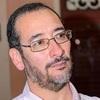Explore all the information on
Swine gut health
Pigs are exposed to various challenges such as weaning, environmental stressors, unhealthy diet, diseases and infections during their lifetime which adversely affects the gut microbiome. The inability of the pig microbiome to return to the pre-challenge baseline may lead to dysbiosis resulting in the outbreak of diseases. Therefore, the maintenance of gut microbiome diversity, robustness and stability has been influential for optimum intestinal health after perturbations. Nowadays human and animal researches have focused on more holistic approaches to obtain a robust gut microbiota that provides protection against pathogens and improves the digestive physiology and the immune system.
The swine gut microbiome is a complex and dynamic ecosystem harboring immensely diverse microbiota including bacteria, viruses, archaea, and fungi that ideally reside symbiotically in the gut of host animals. Among the microorganisms, the number of bacteria outnumbers other microorganisms.
The microbiome robustness, the maintenance of diverse and functional microbiota in GIT is crucial for effective swine production. The microbiome robustness depends on the diversity of the microbiome, so it is not enough just to have the presence of a few different beneficial microbes. Accordingly, new strategies are required to manipulate the gut microbiome to prevent or revert unhealthy states caused by perturbations.
“All disease begins with the gut.”- Hippocrates Post weaning diarrhoea or problems related to gastro-intestinal tract is one of the most frequent causes of heavy economic losses in pig herds. The major bacteria which causes diarrhoea are E. coli and members of the genera Clostridium, Lawsonia and Brachyspira. The important viruses involved are coronaviruses and rotaviruses. Numerous morphological and functional...
Comments : 7
Recommendations: 2
Introduction This article identifies the most significant research innovations that, in our opinion, have been applied by the North American pork industry in the past decade. They are primarily the result of leading edge research in North America. Research discoveries were not considered unless they were being integrated into practice, with the exception of gene editing for pathogen control, which is in the approval process. Innovations that we identified as...
Comments : 0
Recommendations: 0


Strategic use of feed ingredients, nutrients and feed additives to enhance performance and health of weaned pigs
Suggested link
Introduction A gastrointestinal tract (GIT) that functions in an optimum way clearly is of importance to the overall metabolism, physiology, disease status and performance of pigs of all stages of growth and development, and especially in the sensitive post-weaning production period. Disruptions (dysbiosis) in the GIT after weaning caused by internal and external influences can cause large economic losses in the pork industry, therefore the period after...
Comments : 1
Recommendations: 0
Introduction In swine industry, the weaning transition is a complex period during which the piglets have to cope with abrupt separation from their dam, mixing with other litters in a usually new environment and switch from highly digestible feed (milk) to a less digestible more complex solid feed; hence weaning is a stressful experience for the piglets involving nutritional, psychological, environmental, microbiological, and immunological stresses (Lalles 2008), which could...
Comments : 0
Recommendations: 1
In this research trials, we found that Biolex with an inclusion rate of 1lb/ton of feed, improved weight gain and gain to feed ratio in animals under heat stress, when included only in late finishing, and also improves ileal energy digestibility. ...
Comments : 0
Recommendations: 1
Biolex Field trial results in nursery pigs In this research, we found that Biolex improved piglet’s weight gain during the first week after weaning and also in the overall nursery period in 3 different conditions: Deprivation Model Feed and water deprivation Sanitation...
Comments : 0
Recommendations: 2


Will New Version of GMP Boost the Veterinary Drugs Industry?
Suggested link
Chad Hastad (New Fashion Pork) discussed ongoing research in this area, during a Swine It interview with host Márcio Gonçalves....
Comments : 0
Recommendations: 0
1. Introduction Liquid feed has become a popular feeding system for pigs in many European countries. It consists of a blend compound feed (mixture of raw materials “as fed”) with water or liquid food-industry co-products, in a central tank in the pig unit, before delivery through a pump-and-pipes mechanical system [1,2]. Liquid feed contains about 700–800 g of water per kg, since the capacity of the pump-and-pipes devices determines the upper limit for dry...
Comments : 0
Recommendations: 0
Animal breeding is an old practice developed by humans for the production of dairy foods (cattle), transport (horses), rodeo or recreational events (dogs and bison for instance). The task of domestication and/or specific animal breeding at the industrial level includes controlled mating, successful reproduction of captive species and mass production of selected strains for our own consumption or pleasure. This dates back to the Neolithic period (about 7000 BC) when the men started to settle...
Comments : 0
Recommendations: 0
1. Introduction The gastrointestinal (GI) tract is home to the gut microbiome, trillions of colonizing and transient microbes. These microbes support critical health functions including digestion, immune development, metabolism, and resistance to pathogens. While many studies have focused on the bacterial component of the microbiome, the bacteriome, recent studies have demonstrated the ability of fungal microbiome members, the mycobiome, to alter gut microbial community...
Comments : 0
Recommendations: 2
Listen to Professor Bruno Silva from the Federal University of Minas Gerais in Brazil to know more! This video is part of a series of short educational videos, lasting from 5 to 7 min, that help to better understand the feeding behavior of sows and ways to modulate it.
...
Comments : 3
Recommendations: 6


Strategic use of feed ingredients, nutrients and feed additives to enhance performance and health of weaned pigs
Suggested link
Streptococcosis are diseases caused by different species of the genus Streptococcus and, in the case of swine, mainly due to Streptococcus suis . There are 35 recognised serotypes of S. suis, being the serotypes 2, 1/2, 7 and 9 the most frequently isolated in this...
Comments : 0
Recommendations: 1
Dr. Brad Lawrence, Sr. Technical Manager - Pork Business Team North America at Novus International, provides insight into the importance of sow productivity and longevity, and what a year-long field evaluation of MINTREX® trace minerals in sows showed could impact this challenge....
Comments : 0
Recommendations: 3
The 2021 Symposium on Gut Health in Production of Food Animals is now accepting abstract submissions, meeting registrations, and hotel reservations.
The deadline to submit abstracts is Monday, August 30, 2021.
Register now for the symposium to secure your spot.
The 2021 symposium will be held at the Hilton St. Louis at...
Comments : 0
Recommendations: 0
Introduction Market availability and fluctuation in the cost of conventional feed ingredients are pushing producers to increase inclusion of low-cost, fibre-rich co-products in the diets of monogastric animals. One major issue of this approach is that digestibility of high-fibre ingredients varies widely, with α-linked starch being digestible through hydrolytic–enzymatic action, but β-linked dietary fibres only being digested by exogenously supplied enzymes or...
Comments : 4
Recommendations: 1


Will New Version of GMP Boost the Veterinary Drugs Industry?
Suggested link
1. Introduction Combining different feedstuffs to formulate swine diets is essential for the supply of amino acids (AA), energy, and other nutrients necessary for optimal growth and nutrient utilization and production. While the main goal of diet formulation is meeting nutrient requirements, the impact different feedstuffs have on nutrient utilization (e.g., nitrogen retention) and intestinal physiology (e.g., gut health) of the pig also need to be considered. For instance,...
Comments : 2
Recommendations: 0
Porcine epidemic diarrhea virus (PEDV) is a member of the genera Alphacoronavirus in the family Coronaviridae causes newborn and weaning piglets serious diarrhea, vomiting, dehydration, and high mortality. Moreover, PEDV infection also causes severe perturbations of gut microbiota and reduces probiotic bacterial abundance. Therefore, effective protective products against PEDV infection are needed. In the pig farm, sows are the major economic resource, which runs the...
Comments : 0
Recommendations: 0
The 2021 Symposium on Gut Health in Production of Food Animals is now accepting abstract submissions, meeting registrations, and hotel reservations.
The deadline to submit abstracts is Monday, August 30, 2021.
Register now for the symposium to secure your spot.
The 2021 symposium will be held at the Hilton St. Louis at the...
Comments : 2
Recommendations: 3
...
Comments : 0
Recommendations: 0












.jpg&w=3840&q=75)




















